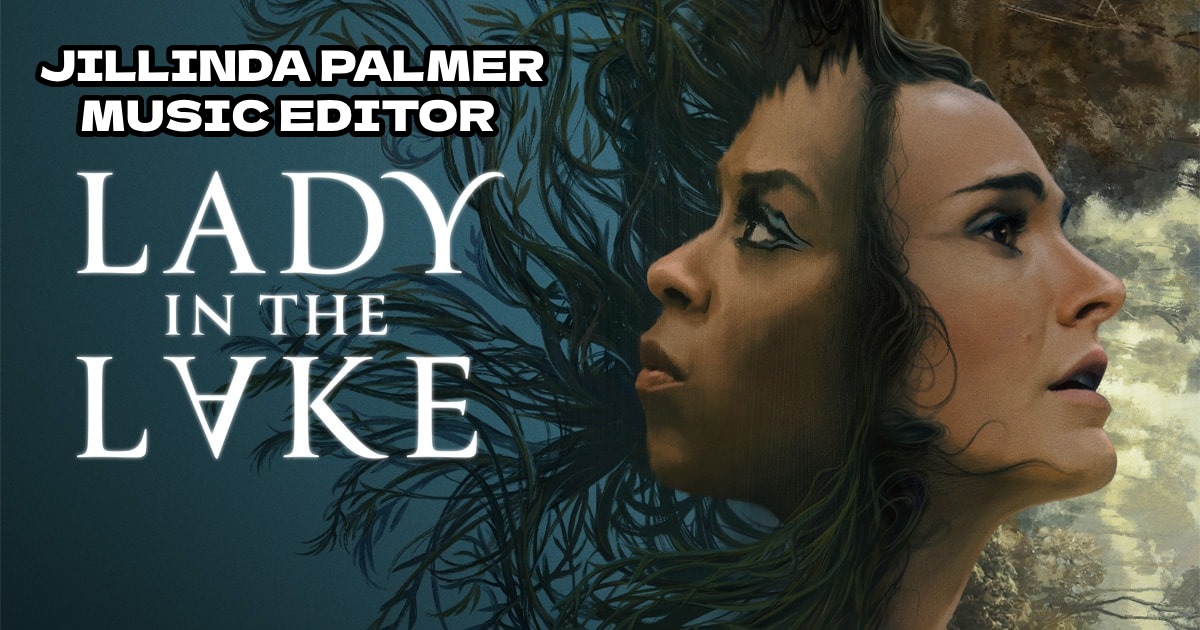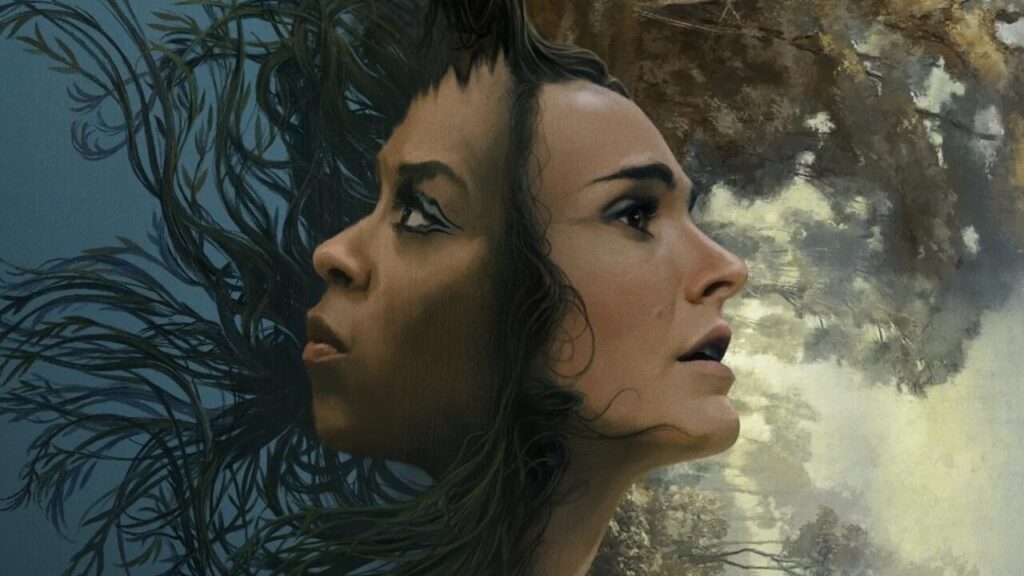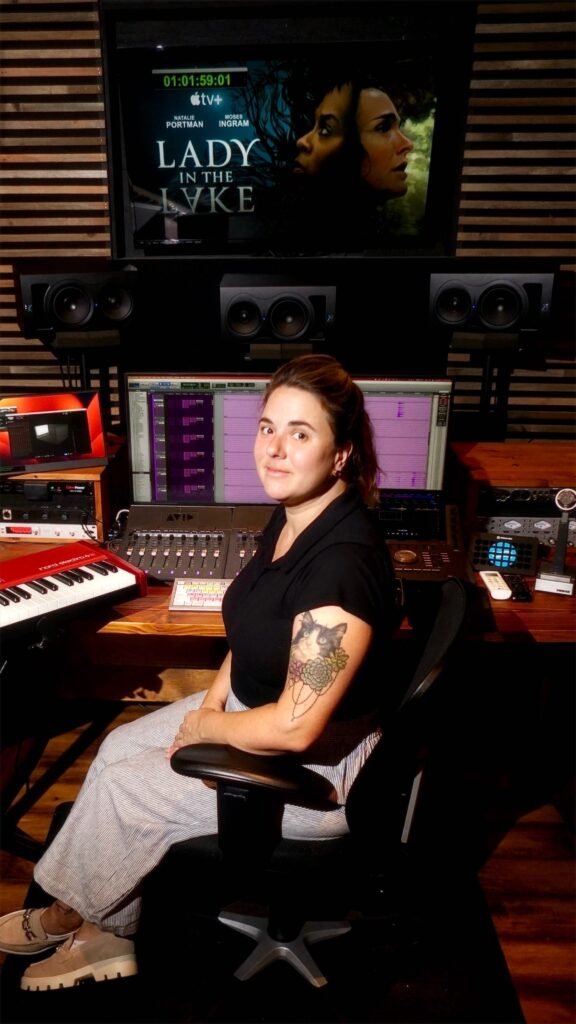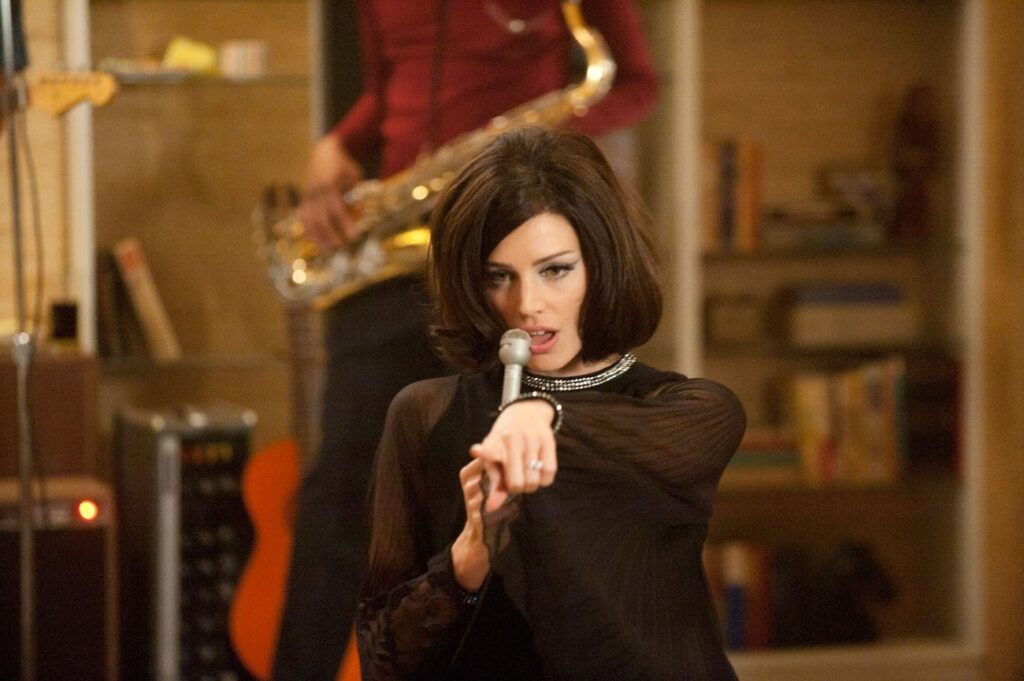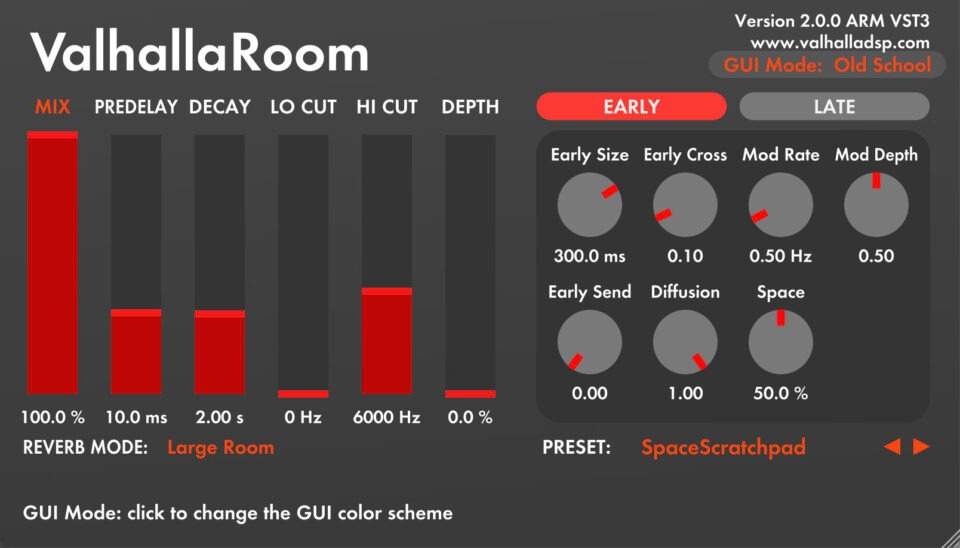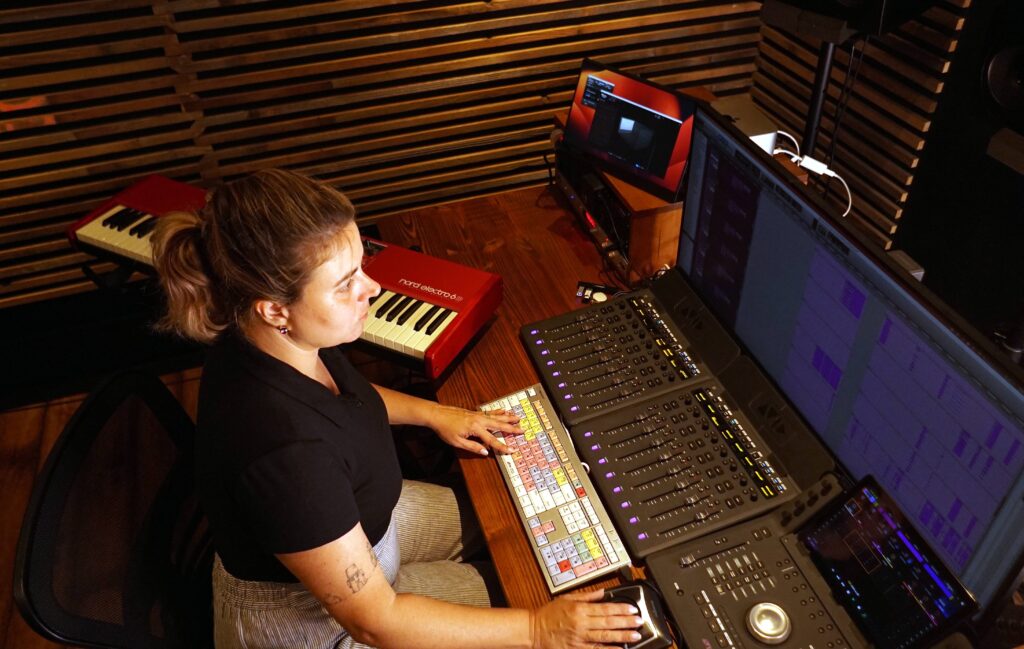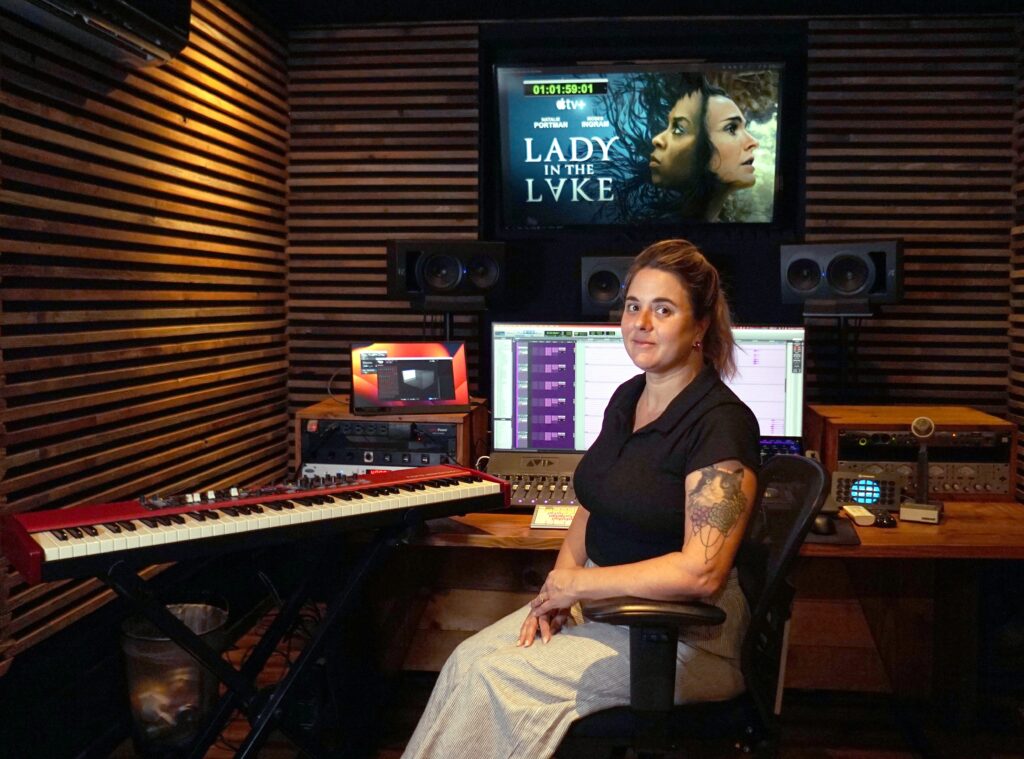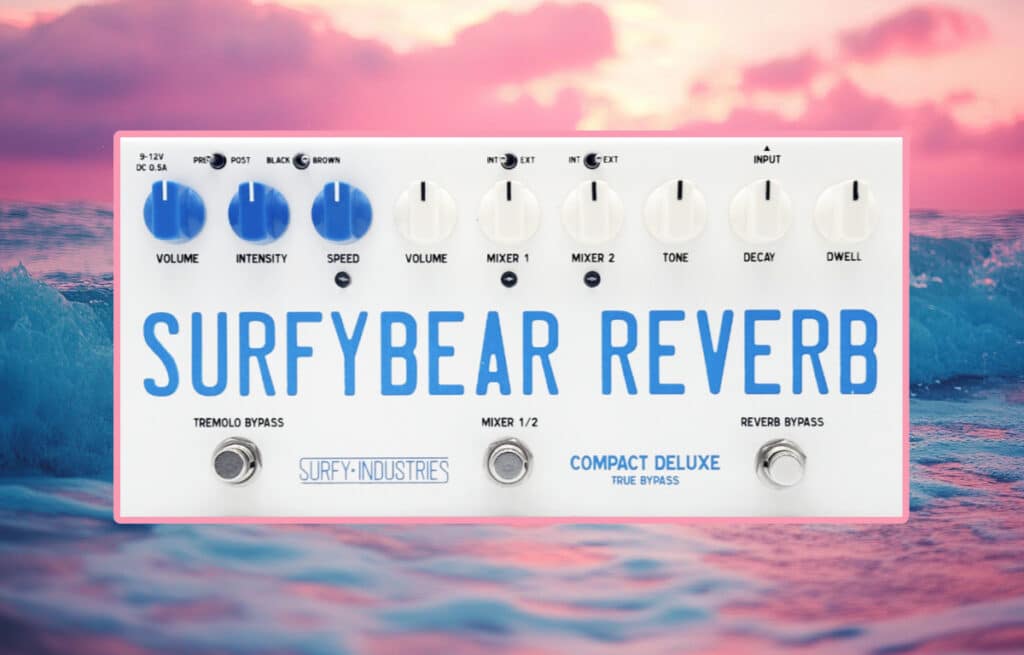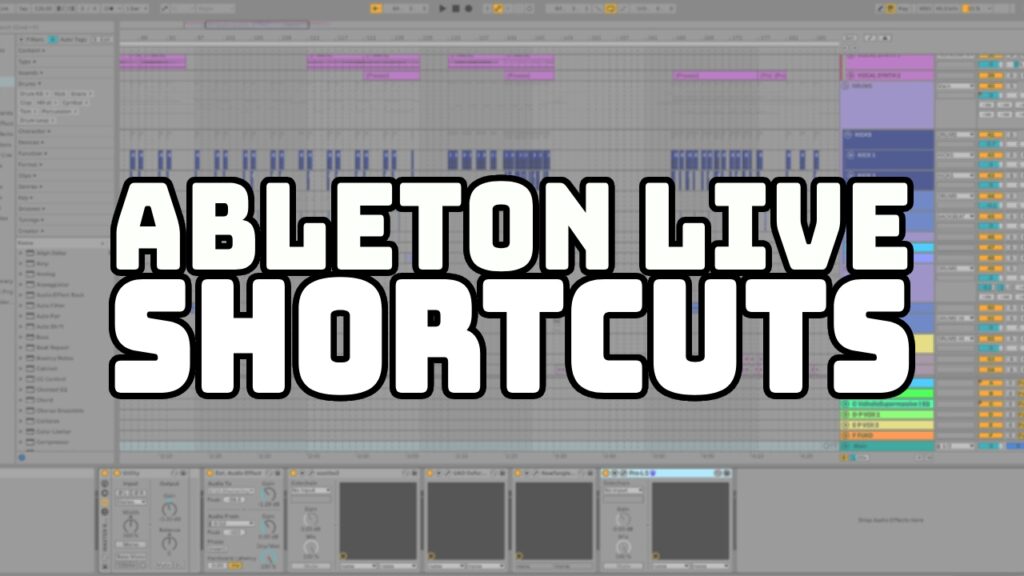Ian Vargo: Thanks for taking the time for this interview. Can you discuss your background and what got you into the field of music editing?
Jillinda Palmer: I grew up in a small town in East Texas called Nacogdoches, located between Houston and Dallas. In 1999, I moved to LA to study animation. But when I got here, I realized animation wasn’t what I wanted to pursue, so I gravitated towards music. I started taking various music courses, including classes on keyboards and music technology. While at Musicians Institute, I ended up taking a class that allowed me to intern at a recording studio. I had already placed out of musicianship because I had played piano my whole life, so this internship became my focus. It was at Mad Dog Studios in Burbank, where I met many of the people I still collaborate with today, including some of my mentors.
Around 2004, I noticed the music industry was changing, with many studios closing down. That’s when I shifted towards post-production. One of my colleagues had a post-production boutique where he did sound design, and he took me under his wing. I spent the next few years learning sound design and eventually expanded into dialog editing and music editing. My background in sound design helped me develop a strong sense of organization, which is crucial in managing a library of sounds and tools.
Interestingly, much of my sound design work was for animated shows, which brought me back into the animation world in a different way. This experience helped me develop an ear for mixing and balancing sound, particularly when working with dialog. Often, I would receive animatics that only contained dialog, and I had to build out all the sound effects and design from there. Over time, I became adept at ensuring the music, sound effects, and dialog could coexist harmoniously, a skill I’ve used throughout my career.
Available via Apple TV +, “Lady In The Lake” is a Dramatic Thriller starring Natalie Portman and Moses Ingram
The Basics of Being A Music Editor
IV: Can you describe the job of music editor and what it entails?
JP: I see myself as a liaison between all the key departments in the production process. I collaborate with picture editors, the composer and their team, the music supervisor, the director, producers, post-producers, and final mixers. My role is to ensure everything stays on track—coordinating schedules, handling notes, managing changes, and prepping for final delivery.
If I’m brought on early enough, I get to work with the editors as they’re refining the picture cut. During this phase, I help place temporary music in the cuts, experimenting with different ideas to find what works. We create a roadmap, using a temp music score and sometimes songs, to guide the tone and pacing of the episode or act. Once the director signs off on that, we meet with the composer to review the temp music. The composer uses our roadmap to inspire their final score, deciding where the music should hit or where silence is just as powerful.
Around this time, I also work with the music supervisor to choose songs. We cut in various options, get feedback from the director or showrunner, and once the selections are approved, the music supervisor starts the licensing process.
While the composers are writing and recording the final score, I’m often working ahead on future episodes. Once the composers deliver their tracks, I cut in the high-resolution files, prep everything for the final mix, and then attend the mix session. This is the most exciting stage for me, as I ensure the music sits perfectly within the world of sound design, effects, and dialog. That final step is where everything comes together.
Jillinda Palmer hard at work on “Lady In The Lake” using Pro Tools
IV: So you’d say the mix is your favorite part of the job?
JP: I absolutely love it. Hearing everything in the room with the engineers and re-recording mixers working their magic is incredible. I know enough about music production to understand what they’re doing on the consoles, but the speed at which they work always amazes me. It’s like we’re flying through it, and it’s so cool to experience.
The reality is that most of these projects are meant to be streamed and aren’t films, so I won’t get to hear them in that kind of environment again. But that’s exactly why we do it in that space—because it gives us the best sonic perspective for where everything should sit.
IV: It’s amazing that when working on episodes of TV and films, when you’re almost done and at the mix stage, you realize it all started from nothing. It started from an idea. And then you have all these people that lent their decades of talent and experience to build something. So in that sense, I understand why the mix is your favorite. I have to agree with you.
JP: Yes, it’s amazing to see the hard work of all the other departments come together. By the time we see it, a lot of the color correction is done, and the VFX are in place. Those are areas I don’t know much about, but I’m always blown away by how beautiful everything looks. It’s incredible to see it all come together, and we’re just in post—that’s not even counting the massive effort that goes into production. I really hope more of it starts coming back to LA.
IV: Do you have any studios out there that the productions that you work on frequent in terms of mix, or do you have any favorite stages in LA?
JP: A long time ago, I worked at Todd-AO, which was one of the biggest mixing stages in town at the time. Now, I go wherever the show takes me—Warner Brothers, Universal, Sony, or wherever the work is. Since I worked at Todd-AO back in the day, I still know a lot of the same people, so it’s always interesting to see who I’ll run into.
IV: What is a challenge that you face regularly?
JP: The most common challenge is navigating everyone’s needs, especially since everything happens at once. It’s about compartmentalizing what should happen and when, and trying to anticipate those needs to stay one step ahead. It feels like a juggling act, but in a way, it’s also like solving a puzzle. Schedules are always changing, so the best thing you can do is stay ahead and ensure that the music departments are meeting their deadlines while editorial is happening simultaneously.
Producers will ask why something hasn’t happened yet, and it’s rewarding to be able to say, “It’s already taken care of.” That’s the tricky part—staying on top of everything. Keeping up with the tools can also be challenging, but I see it as the fun part. You’re always learning something new. The tools are constantly updating, so you can’t get too attached to the way things used to work. Of course, staying current also means paying for all those updates!
The Lady In The Lake
IV: Can you discuss how you came to work on Apple TV’s Lady In The Lake?
JP: I’m represented by Insight Management, and my agent, Rochelle, puts my name out there for projects in advance. In this case, I was contacted by Amanda Lencioni, a post producer I hadn’t worked with before but knew through mutual colleagues. Interestingly, she reached out to me directly around the same time my agent submitted me for the job. Sometimes I’m hired by the production, and other times by the composer’s team—it really depends on the show. For this project, Amanda connected with me through our shared network.
This was actually my first in-office job since the pandemic, as everything had been remote for the past three years. It took a little adjustment—I had to remember how to commute and even figure out what to wear again! But I was happy to be around people, and we became like a family. It felt good to be back after being isolated for so long.
I remember Amanda telling me during the interview that being in the office was a requirement for the job. At first, I was nervous, thinking, “What if we all get COVID?” But it turned out fine—we only had one instance in over a year, so we did pretty well.
Going back to the office made me realize the importance of being more visible as music editors. We’ve been behind the scenes for so long, especially during the pandemic, working remotely with our cameras off and masks on. But if we want people to recognize what we contribute, we need to be present. Otherwise, we’re constantly having to prove ourselves. Being in the office reminded me that visibility is key for showing the entire production and post-production team what we’re capable of. It’s easy for our role to fall away when we’re behind the curtain, but being there makes a difference.
IV: I understand you worked closely with the music supervisor to select period accurate songs from the 1960’s. Can you discuss that process?
JP: For this project, the post producer was Amanda Lencioni, and Linda Cohen was the music supervisor. Linda would provide batches of songs, especially when we had a temp track we couldn’t afford. Since Lady in the Lake is set in 1967 Baltimore, with flashbacks to earlier times, the music had to be period-specific. We couldn’t use anything outside of that era. One of the cool things Linda did was leverage her relationships with local labels in Baltimore to get genre-specific music from that area, which was amazing.
We had so many songs to work with, and I would cut them in, trying to get as close as possible to the temp track. Sometimes, the team loved the temp track so much that they decided to pay for it, despite the cost. Linda was also great at clearing tracks, so it was an all-hands-on-deck effort. We’d spend a lot of time searching for the right music—sometimes on YouTube or other sources—and I even used ChatGPT to search for things. Along the way, I discovered a lot of music that was new to me, even though it was older material. It was a nice bonus to find new favorites while helping with the search.
IV: Speaking of the 60s, it’s hard to believe that Mad Men is over 15 years old now. Can you discuss what kind of work you were doing/ what your experience was like?
JP: Mad Men didn’t have a lot of score, so the songs that were included had a significant impact. It was such a dialogue-driven show, and being a period piece, we were confined to a specific era of music. I remember working with Jenny Barak at Pitch N Sync during Season 5 of Mad Men. One of the memorable moments was when we cut in the pre-record of “Zou Bisou.” Megan sings it to surprise Don Draper for his birthday in the apartment.
That was my first experience working with a pre-record, where they filmed to a song that had been pre-recorded. Music editors often build these tracks for the production to film against. They receive files from the composer and prepare them so they can be played back on set for the actors, often through in-ear monitors.
Years later, while working on Crazy Ex-Girlfriend, I had the chance to work with multiple pre-records—about five per episode! That was pretty exciting, especially since it was essentially a musical.
Jessica Paré as Megan Draper in AMC’s Mad Men. Photo courtesy of Vanity Fair.
IV: Were you able to meet Adam Schlesinger when working on that?
JP: Talking about a legendary songwriter—oh my gosh, he was incredible. He was one of the first notable figures we lost during COVID, and when he passed, my heart broke. Everyone’s heart broke for that loss. He had an amazing ability to write an entire song, and when they’d ask him to change just one little thing, he’d make that change and elevate it even further. He never settled; he was truly remarkable. He could nail any genre, and that experience gave me exposure to a wide range of styles with each episode. It was always fun to tap into that versatility, especially since period pieces often confine you to one specific genre.
IV: You apparently played a big part in discovering Marcus Norris, who ultimately composed the music for Lady In The Lake, can you elaborate on that?
JP: I didn’t really have a say in finding Marcus; that was actually Boaz, one of the producers, who wrote some of the episodes. He played an integral role in the entire process and had previously worked with Marcus on a couple of his films. I had been hired early on for this show to work on the temp score, but things just weren’t hitting the mark. Boaz suggested we try some temp music from Marcus, so he provided me with a folder of his work. As soon as I started cutting things in, I knew we had found it. It was exactly what we had been waiting for, even if we hadn’t realized it until then. It was exciting when we all recognized it together; it truly captured the sound of the show. Although I wasn’t there to witness that initial decision, it was gratifying to see it come together. Ultimately, it was really Boaz who made it happen.
Technological Developments and AI
IV: How does technology influence your work? What are some softwares or tools that make your job possible or easier?
JP: Obviously, Pro Tools is the industry standard—everything we do is based on that. As far as plugins go, I don’t use too many, but I have my go-tos. When it comes to cleaning up audio, I use iZotope RX all the time. I’ve been using it since my days in sound design and dialog editing, so when I transitioned to music editing, it was an easy adjustment. The tools translated seamlessly for me. Another big tool I couldn’t live without is Pitch ‘n Time by Serato. It allows me to pitch my songs, stretch or compress them. While my capabilities with it are somewhat limited, it’s such a helpful tool, especially for stretching and compressing. It’s so good that you can do it gradually or exponentially without defragmenting the quality of the song too much. You can’t push it too far, but it definitely saves you when you need it. And then, of course, Valhalla reverbs are another essential.
Valhalla DSP makes several fantastic reverb plugins including Room
IV: What kind of cleaning up are you doing with RX?
JP: For example, it might be something like a piano pedal thud at the end of a file, or you can hear it trailing off before the thud, or an amp might have a slight hum. Maybe there’s some minimal background talking, but I can still fix it. In some of Marcus’s files, since they were recorded with an orchestra in a live room, you might hear a little piece of paper, a tiny footstep, or even a breath at the beginning. That’s when I use tools like iZotope to remove those small noises. I don’t have to use them often, but it’s nice to know they’re there when needed. iZotope is basically my go-to for that.
IV: Artificial Intelligence has been widely discussed over the past year or so, with some creatives fearful it will ultimately replace or greatly change their jobs. Can you discuss your thoughts on AI and perhaps if you can see it affecting your work?
JP: I’m currently enrolled in a course at Berklee College of Music—it’s their first class on AI as it relates to music, specifically generative AI. It’s an online class that’s diving deep into how AI is influencing music right now. I have just two more classes left, and I’ve already learned so much in such a short time. For example, with my iZotope software, I learned how the AI is trained by analyzing the spectrogram, which I’ve always thought of as a kind of fingerprint for a sound wave. I’ve been using iZotope for over a decade, and it’s always felt like using Photoshop, but for sound waves, where you can clean up the audio visually. Now, learning how the underlying technology works, it’s clear that AI has been part of the process for a while, but it’s just becoming more advanced and efficient. The tricky part is balancing that efficiency. These tools are amazing for enhancing workflows, but with that efficiency, they’re taking over tasks we might have hired assistants for in the past—things like organizing, batch labeling, and other tedious tasks that can now be done with Apple scripts or AI. That’s the challenging part because those tasks used to be someone’s entry-level job.
IV: And the challenge in taking away those entry level jobs is that, even if it is menial work, it trains them to do the higher level work.
JP: Exactly, I was watching a discussion with Bill Gates and James Cameron, and Cameron made a really interesting point. He said something along the lines of, “If you start to strip everything down and take away someone’s life purpose, then we have to question the morality of that.” And I think that really resonated with me because, while automation and AI have been progressing for over a decade now, there’s a natural evolution to it, but it’s also controversial. These tools are great, but we shouldn’t become overly reliant on them. If we do, everything might start sounding the same, and we could lose that human touch that makes things unique. In one of my AI music classes, we were testing out an AI mastering tool, and it’s impressive, but it made me think about where the balance lies between using these tools and keeping the human element intact.
IV: Many fields in the entertainment industry have been male dominated, and music editing is no exception. Can you describe your journey as a female and any advice you have for girls and women interested in the industry?
JP: I’ve been fortunate to work on many female-driven, female-created shows, but it’s definitely about navigating a male-dominated industry. Over time, though, we’re seeing progress—more inclusion and a broader spectrum of people within the industry. If you’re a young woman trying to break in, my advice is: don’t give up. Try to get in with a composer and learn their workflow, because oftentimes, they’ll hire you later once you’ve been their assistant and learned how they work. And don’t be afraid to assert your confidence. Don’t shy away from that, because you’ll be respected more for it. It might feel tough at first, but it’s important to keep pushing through.
Also, with more shows being led not just by women, but also by LGBTQ+ individuals and people of color, we’re seeing positive changes. I truly believe there’s more room now for young people, for women, and for all underrepresented groups as the industry continues to evolve for the better.
BIOGRAPHY
Jillinda Palmer is a Los Angeles based Music Editor with more than 20 years of industry experience. She is an active performing musician and vocalist who thrives in her work as a music editor for film and television.
Jillinda most recently served as the music editor for the Apple TV+ limited series Lady in the Lake, starring Natalie Portman and Moses Ingram, written and directed by Alma Har’el. Some of Jillinda’s other notable TV credits as a music editor include Better Things (FX), Bosch: Legacy (Freevee/Prime), Diary Of a Future President (Disney+/CBS), Crazy Ex-Girlfriend (The CW), Power Book II: Ghost (STARZ), The Ms. Pat Show (BET+) Royal Crackers (Adult Swim) and various network TV pilots, including Baker and the Beauty (ABC), Bluff City Law (NBC), Carol’s Second Act (CBS), Lincoln Rhyme: Hunt For The Bone Collector (NBC) and Rel (20th Century Fox Television).
Her feature film credits for music editing include Miller’s Girl (Lionsgate) starring Martin Freeman and Jenna Ortega, Bromates (Darius Films) exec. produced by Snoop Dogg, Spell (Paramount), The Lovers (A24), Spivak (Netflix), The Big Ask (Tribeca Films), Deadwood: The Movie (HBO – based on the series), and Jillinda is excited about her latest involvement with an upcoming NEON film directed by Duke Johnson and exec. produced by Charlie Kaufman.
Jillinda’s work has earned her two M.P.S.E. Golden Reel nominations for Crazy Ex-Girlfriend in 2017 and Deadwood: The Movie in 2020, and a Primetime Emmy Award for Shark Tank in 2014. She is a member of the Motion Picture Editors Guild (Local 700) and has recently been accepted for membership to the Motion Picture Sound Editors (M.P.S.E.).
In 2003 Jillinda studied audio recording and music performance at the Musicians Institute in Hollywood. This led her to the post-production field where she began working as a sound effects editor, sound designer and dialogue editor. In 2012, she decided to focus on music editing and took a job at Pitch N Sync under Jenny Barak. While there, Jillinda saw how working as a music editor would allow her to apply her fundamental knowledge of music combined with her editorial expertise to enhance her clients’ musical intent.
Over the years Jillinda has been mentored by many great music editors including Moira Marquis, Micha Liberman, Emily Kwong, Edwardo Ponsdomenech along with composers such as Joey Newman, Frank Ciampi and Andy Paley. With every project that comes her way, she continues to learn new techniques and appreciates keeping up with current technology. To keep her musicianship sharp she regularly performs live as a vocalist with bands such as Tom Kenny & The Hi-Seas, DJ Lance Rock, and The Monolators, and works as a multi-instrumentalist and arranger for recording sessions.

